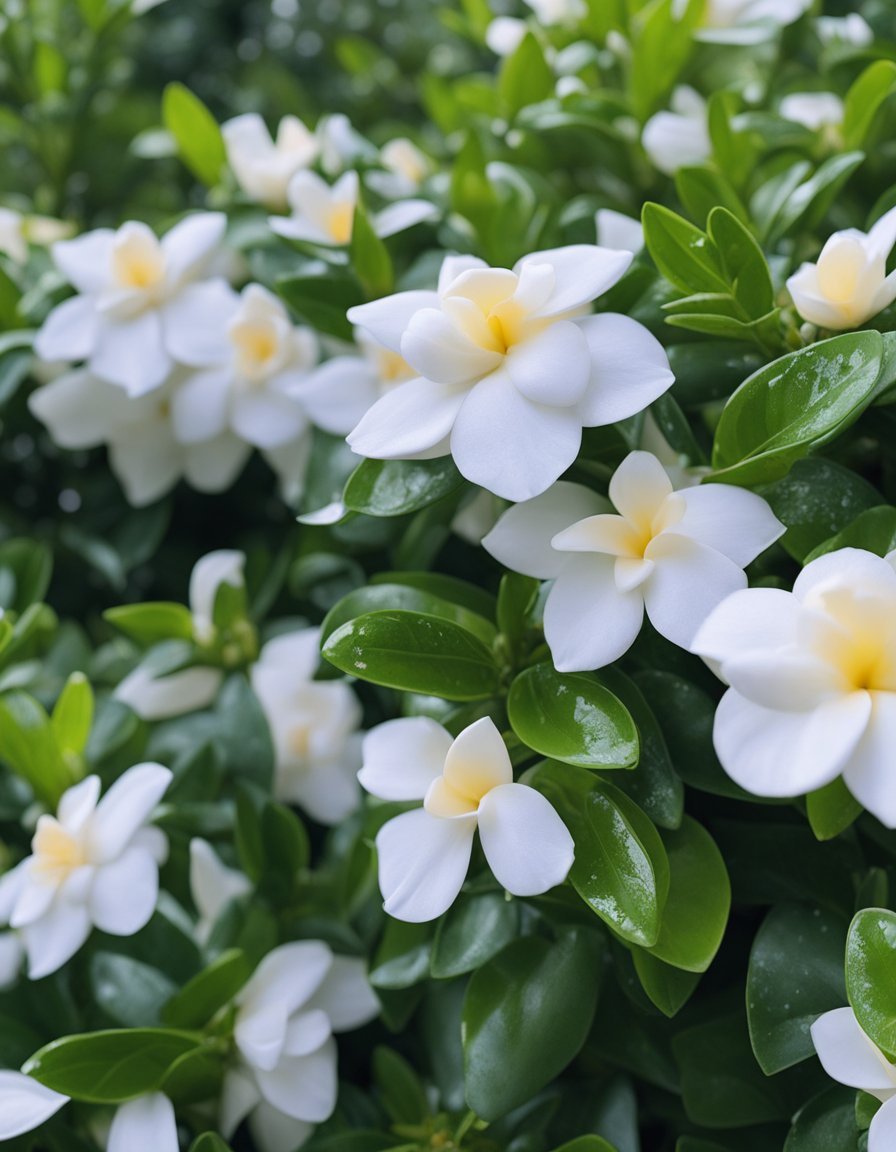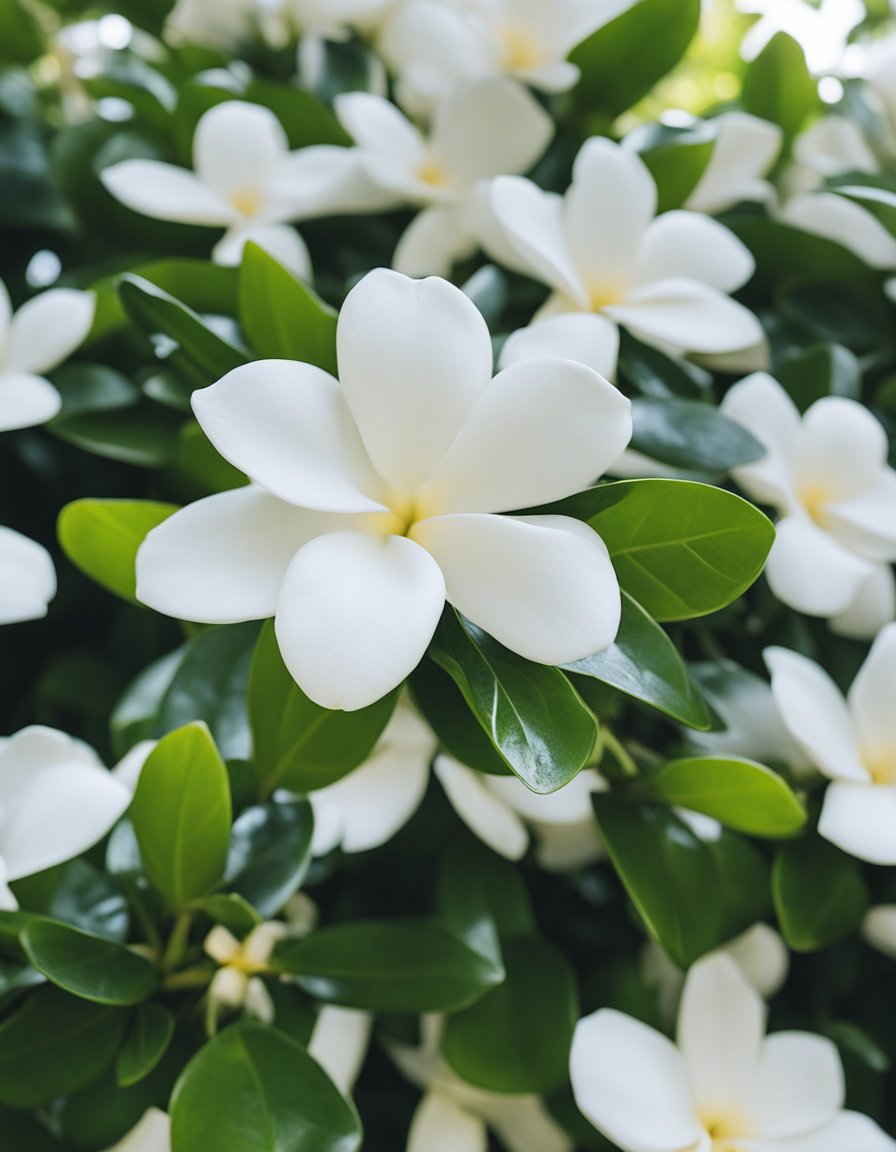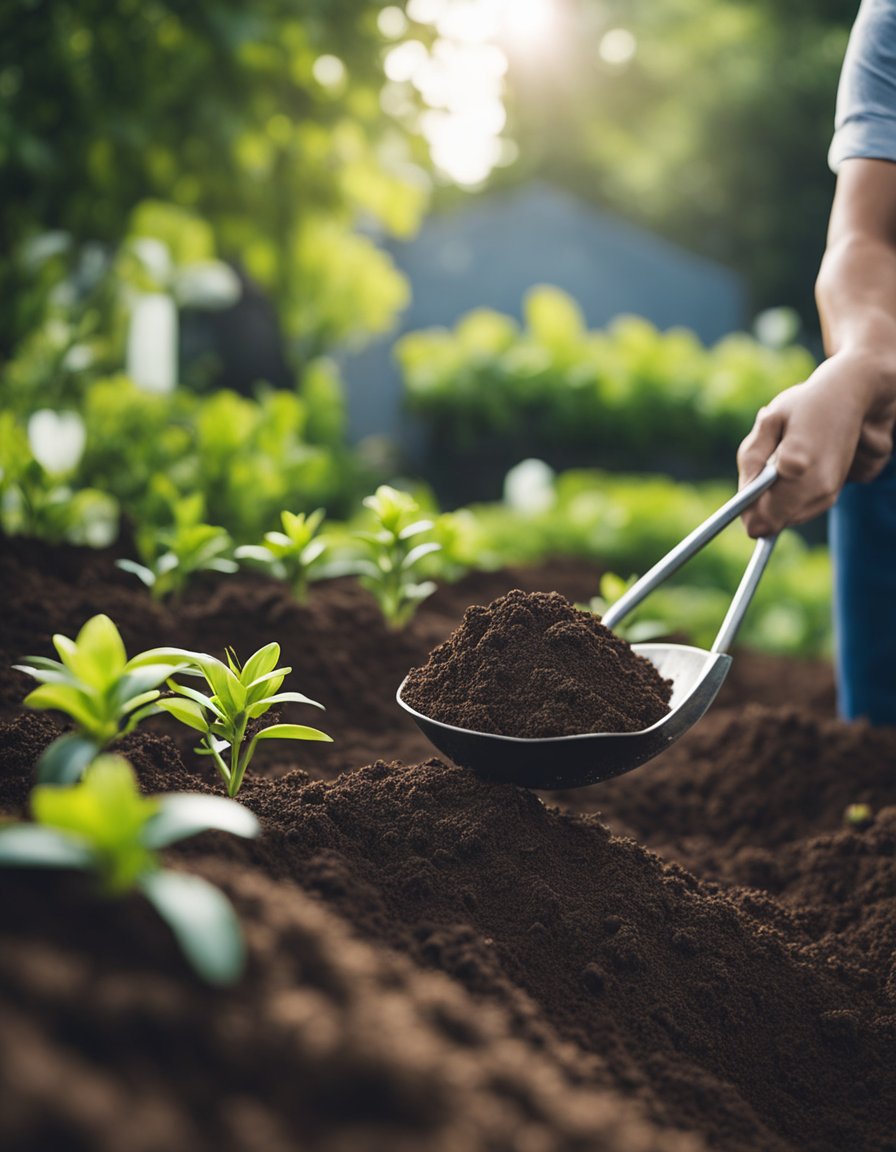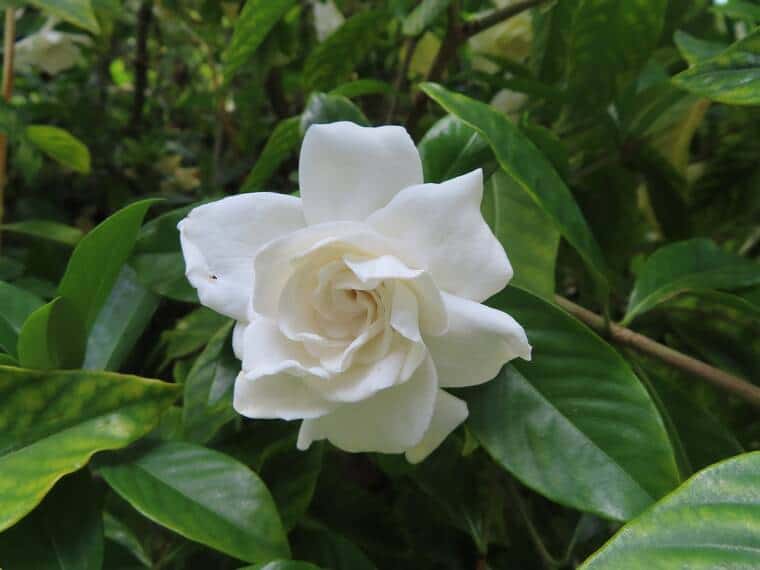Gardenias are a popular flowering shrub that produces beautiful, fragrant blooms. If you’ve ever wondered how to fertilize gardenias to enhance their growth and ensure vibrant blossoms, you’re in the right place. However, they can be pretty demanding and require specific care to thrive. One of the most critical aspects of gardenia care is fertilization. This article will explore the best techniques for fertilizing gardenias to ensure they grow healthy and strong.

Before diving into fertilization techniques, it’s essential to understand the needs of gardenias. These plants require acidic soil with a pH between 5.0 and 6.5. They also need plenty of water, but their roots cannot tolerate standing water. Gardenias prefer partial shade and thrive in warm, humid environments. With this knowledge, gardeners can prepare their soil and choose the right location for their gardenia plants.
Regarding fertilization, gardenias require regular feeding during their growing season, typically from March to October. Fertilizers should be designed for acid-loving plants and applied every 2-4 weeks. It’s important not to fertilize gardenias during the winter months, as this can cause new growth susceptible to frost damage. By following these fertilization techniques and additional care tips, gardeners can enjoy the beauty and fragrance of their gardenia plants for years to come.
Key Takeaways
- Gardenias require acidic soil, plenty of water, and partial shade to thrive.
- Fertilizers designed explicitly for acid-loving plants should be applied every 2-4 weeks during the growing season.
- Gardeners should avoid fertilizing gardenias in winter to prevent frost damage to new growth.
Understanding the Needs of Gardenias

Gardenias are popular evergreen shrubs known for their fragrant white flowers and dark green leaves. They are native to tropical and subtropical climates and are typically grown in hardy zones 8-11. Gardenias are a great addition to any landscape and can add a touch of elegance to any garden.
When fertilizing gardenias, it is essential to understand their needs. Gardenias require well-draining soil that is rich in organic matter. They prefer slightly acidic soil with a pH between 6.0 and 6.5. If the soil is too alkaline, gardenias may experience nutrient deficiencies, leading to stunted growth and yellowing leaves.
Gardenias also require full sun to morning sun with afternoon shade. They need at least 6 hours of sunlight per day to thrive. In addition to proper sunlight, gardenias need consistent watering. They require at least 1 inch of water per week, either from rainfall or watering.
When it comes to fertilizing gardenias, it is essential to use a fertilizer that is specifically formulated for acid-loving plants. Gardenias should be fertilized every 4-6 weeks during the growing season, typically from spring to fall. Over-fertilizing can lead to excessive growth and reduced flowering, so following the recommended dosage on the fertilizer package is essential.
In summary, gardenias are a beautiful addition to any landscape but require specific care to thrive. By understanding their needs for soil, sunlight, and water, as well as proper fertilization, gardenias can be a stunning addition to any garden.
Preparing the Soil for Gardenias

Before fertilizing gardenias, it is essential to prepare the soil properly. Gardenias prefer acidic soil with a pH between 5.0 and 6.0. If the soil is not naturally acidic, it can be adjusted by adding sulfur or aluminum sulfate to the soil. A pH test kit can determine the soil’s acidity level.
Gardenias also require well-drained soil. If the soil is heavy or clay-like, it can be amended with sand, perlite, compost, or organic matter to improve drainage. If planting gardenias in containers, use a potting mix specifically formulated for acid-loving plants. This mix may contain peat moss, bark, or other ingredients that help to maintain soil acidity.
When planting gardenias, it is essential to ensure proper drainage. Poorly drained soil can cause root rot and other problems. To improve drainage, plant gardenias in raised beds or mounds or amend the soil with organic matter.
Adding a layer of organic mulch around the base of gardenias can help to maintain soil moisture and temperature. Mulch also helps to suppress weeds and can improve soil quality over time. However, be careful not to over-mulch, as this can cause problems with soil aeration and drainage.
Overall, preparing the soil properly is an important step in ensuring the health and vitality of gardenias. Gardenias can thrive and produce beautiful blooms by providing the right growing conditions.
Fertilizing and Watering Techniques
Gardenias are beautiful and fragrant flowers that require proper care to thrive. Fertilizing and watering are two essential techniques that gardeners need to master to ensure that their gardenias grow healthy and strong.
Fertilizing Techniques
Gardenias require regular fertilization to maintain their health and beauty. Gardenia fertilizer is available in different forms, including granular, liquid, pellet, and powder. When choosing a gardenia fertilizer, it is essential to consider the plant’s nutrient requirements. Gardenias require a fertilizer high in nitrogen, phosphorus, and potassium. Gardenia fertilizers also contain other essential nutrients such as iron, copper, magnesium, calcium, and sulfur.
Organic fertilizers such as compost, manure, and bone meal are suitable for gardenias. These fertilizers are slow-release, meaning they provide nutrients to the plant over an extended period. Gardeners can also use Epsom salt as a gardenia fertilizer. Epsom salt is high in magnesium, which is essential for plant growth.
When fertilizing gardenias, following the manufacturer’s instructions is essential. Over-fertilization can damage the plant’s roots and leaves. Gardeners should also avoid fertilizing gardenias during the winter months when the plant is dormant.
Watering Techniques
Gardenias require consistent moisture to thrive. Gardeners should water their gardenias regularly to ensure that the soil remains moist. However, overwatering can lead to root rot, damaging the plant. Gardeners should water their gardenias deeply once a week, especially during the hot summer months.
Rainwater is ideal for gardenias as it is free of chlorine and other chemicals found in tap water. If rainwater is unavailable, gardeners can use distilled water to water their gardenias.
Mulching is an effective way of retaining moisture in the soil. Gardeners should apply a 2-4 inch layer of organic mulch around the base of their gardenias. Mulch also helps to regulate the soil temperature and prevent weed growth.
In conclusion, fertilizing and watering are essential techniques that gardeners need to master to ensure that their gardenias grow healthy and strong. By choosing the right fertilizer and following proper watering techniques, gardeners can enjoy beautiful and fragrant gardenias all year round.
Additional Care Tips for Gardenias
In addition to fertilizing your gardenias, a few other care tips can help ensure healthy growth and beautiful blooms.
Planting and Pruning
When planting gardenias, choosing a location that receives full sun or partial shade and has well-draining soil with a pH between 5.0 and 6.0 is essential. Gardenias also benefit from regular pruning to promote bushier growth and better air circulation.
Color and Buds
Gardenias require consistent moisture and a steady supply of nutrients to encourage vibrant color and abundant buds. In addition to fertilizing, gardeners can supplement soil with organic matter such as straw, hay, or coffee grounds to help retain moisture and improve soil texture.
Foliage
Gardenias are known for their glossy, dark green foliage, which can be prone to fungal diseases such as sooty mold. Gardeners should avoid overhead watering and ensure good air circulation around plants to prevent these issues.
Winter Months
Gardenias may require additional protection from cold temperatures and frost during the winter months. Gardeners can cover plants with blankets or burlap to help insulate them from the cold.
Apply Fertilizer
When applying fertilizer, gardeners should follow the manufacturer’s instructions carefully to avoid over-fertilizing, which can damage the plant’s roots and leaves. Choosing a fertilizer specifically formulated for acid-loving plants like gardenias is also important.
Tips and Garden Centers
Gardeners can consult with their local garden center or nursery for additional tips on caring for gardenias. Many garden centers also carry a variety of organic fertilizers and soil amendments that can help improve soil quality and promote healthy plant growth.
With proper care and attention, gardenias can thrive and provide gardeners with beautiful blooms and fragrant, glossy foliage.
Frequently Asked Questions
What is the best fertilizer for gardenias?
The best fertilizer for gardenias is specifically formulated for acid-loving plants. Look for fertilizers with a high nitrogen content and a low phosphorus content. Some popular options include Miracid by Scotts, Gardenia Liquid Fertilizer by Perfect Plants, and Jobe’s Organics Soil Acidifier Fertilizer.
How often should gardenias be fertilized?
Gardenias should be fertilized every 4-6 weeks during the growing season, typically from spring to early fall. Avoid fertilizing gardenias during the winter months when they are dormant.
Can coffee grounds help gardenias?
Coffee grounds can be used as a fertilizer for gardenias, as they are rich in nitrogen. However, they should be used sparingly and mixed with other organic materials to avoid creating an overly acidic environment.
Does Miracle-Gro help gardenias?
Miracle-Gro can be used to fertilize gardenias, but choosing a formula specifically designed for acid-loving plants is essential. Look for a product with high nitrogen and low phosphorus content.
What is the NPK ratio for gardenia fertilizer?
The ideal NPK ratio for gardenia fertilizer is 30-10-10. This means the fertilizer contains 30% nitrogen, 10% phosphorus, and 10% potassium. However, it is vital to choose a fertilizer that is specifically formulated for acid-loving plants.
Why are my gardenia leaves turning yellow?
Yellowing leaves on gardenias can indicate a nutrient deficiency, such as a lack of nitrogen or iron. It can also be caused by overwatering or underwatering, pests, or disease. It is essential to diagnose the underlying cause of yellowing leaves to treat the problem effectively.

